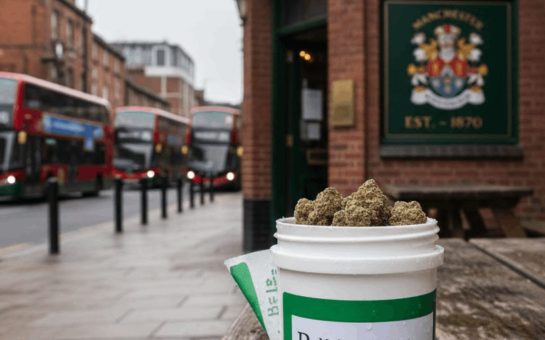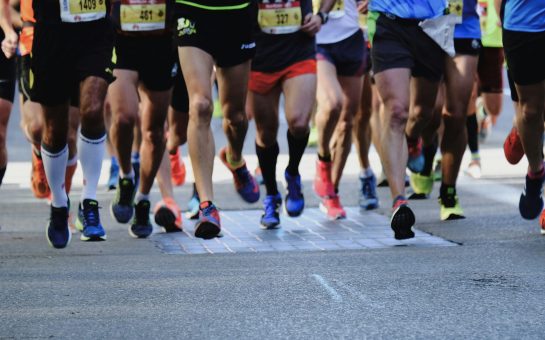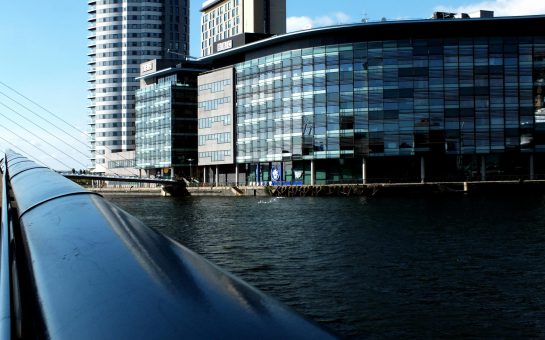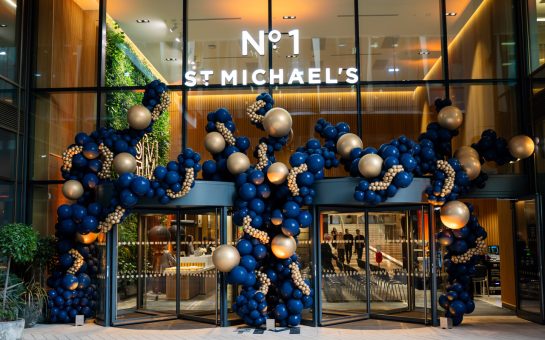Gargoyles might not be the first thing you think of about Manchester’s architecture.
The iconic glasswork of the Urbis, the shadow overhead from the imposing Beetham Tower or even the neoclassical stonework of Manchester Central Library… but surely not gargoyles.
But glaring down at you from the heights of the town hall, John Rylands Library or Manchester Cathedral, these medieval motifs of great symbolic significance exist in generous quantity.
Derived from the French word for throat, gargoyles were a feature of medieval architecture designed to dispel water from their mouths in an elaborate form of drainage geared towards protecting the masonry.

GUSHING GARGOYLE: Fountain at Albert Square, Manchester (Picture courtesy of Duncan, with thanks)
Carried over to England by the Normans, who were renowned for their prolific building of castles, cathedrals and abbeys, these grotesque architectural symbols remained a fascination for the British sensibility through to the nineteenth-century.
The Gothic school of architecture with which they are synonymous, however, fell out of favour in the passage of time, finding resurgence only with the onset of the Victorian period.
Johnny Walker, a freelance creative practitioner who led the recent ‘Gargoyles r us’ tour at the John Rylands Library, told MM that the Victorians ‘loved’ all things medieval and their re-imagined architecture of this early period, with its characteristic flamboyance and eccentricity became known as Neo-Gothicism.

LURKING ABOVE: Gargoyle on John Rylands Library in Manchester (Picture courtesy of Allison Meier, with thanks)
The nineteenth-century also saw the rapid expansion of Manchester, and this remains evident today in the profusion of extant Victorian buildings scattered across the city.
With quirky design features a-plenty, these buildings promise gargoyles, grotesques and plenty of other interesting and intricate structural motifs harking back to the Middle Ages.
Senior lecturer in Human Geography and member of the Manchester Centre for Gothic Studies, Dr Julian Holloway, defines the difference between a gargoyle and a grotesque as purely functional, as gargoyles were used as a means of releasing water, while grotesques are their decorative equivalent.

‘LOOSELY BASED ON DRAGONS’: Gargoyle at Manchester Minshull Street Crown Court (Picture courtesy of Duncan, with thanks)
“Popular right through to the nineteenth-century, grotesques can be linked to Roman excavations in the fifteenth-century, when all sorts of strange designs were found in the ancient grottoes. These motifs were ‘grottoesque’, hence the term grotesque,” he said.
These caves or crypts were home to the splendid array of extravagant decorations that form a key part of the grotesques of Manchester, though the word since its first use has come to mean something quite different.
Now coined as a term to connote anything fantastical, bizarre and altogether unusual, the term grotesque as it is known today appropriately applies just as much to the odd-ball figures dotted about Manchester Cathedral.
It does, however, still inspire the amazing in art and literature. To the sympathetic, artistic imagination, the grotesque evokes discomfort confusingly mingled with fascination and perhaps this sentiment of morbid curiosity is what best captures the Victorian ideal of gargoyles/grotesques in Manchester.
Victorian architects like Thomas Worthington, who designed the City Police Courts on Minshull Street in 1873, as well as the Jubilee Fountain in Albert Square, spent a great deal of time working on grotesque figures as symbols of something beyond themselves.
Dr Holloway told MM that the animal carvings by Earp and Hobbs were evocations of the magistrates within the building – the owl on the Bloom street side of the courts depicting wisdom, for example.
Manchester Cathedral received a similar treatment, as folkloric and biblical references were carved throughout the building to act as visual representations of Christian virtues and morality at a time of poor literacy.
Mr Walker said: “Gargoyles are loosely based on dragons, which were seen as a personification of the devil and evil. The more of these kind of features you had around you, the more interesting and intelligent you looked at that time.”
Perhaps it is this inherent contradiction of the puritanical morality of the medieval period and the ostentation of Victorian display that so captures our imagination.
In any case, the weird and wonderful gargoyle is here in abundance. Keep an eye out for their leering faces next time you’re about in Manchester…
For more on this story and many others, follow Mancunian Matters on Twitter and Facebook.



